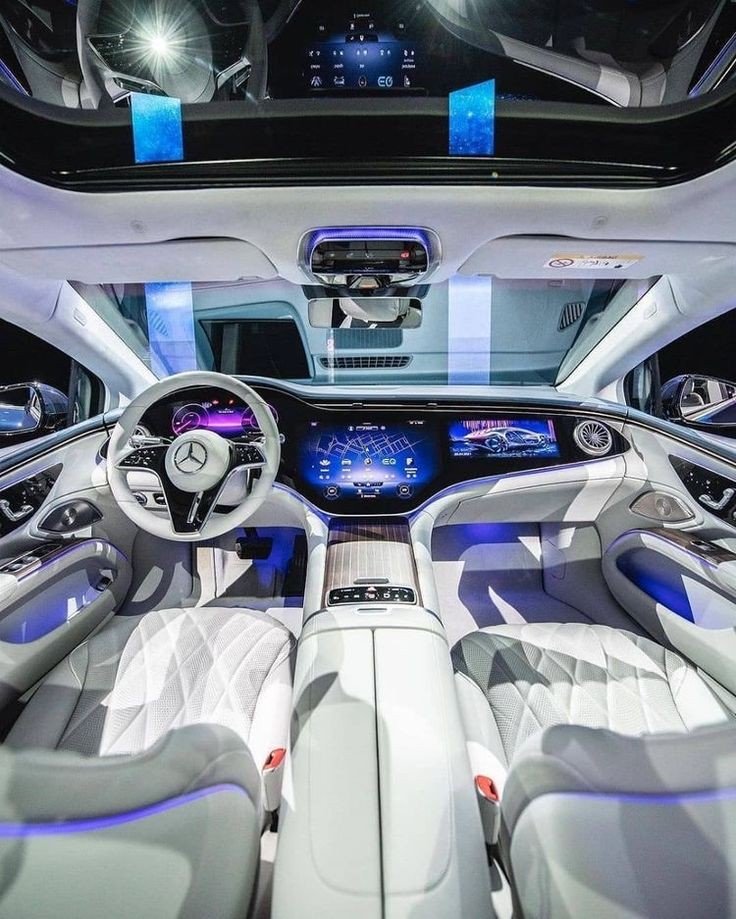
India’s automotive industry, a critical component of the country’s economic framework, is currently facing a unique set of challenges. The decline in rural demand for automobiles, coupled with adverse weather conditions and shifting consumer behavior, has created a complex landscape for automakers, banks, and financial institutions. As these challenges coincide with the festive season—a traditionally strong sales period for the auto sector—companies are navigating uncharted territory, looking for ways to stimulate demand while mitigating risks associated with high inventory levels and uncertain market conditions.
This article explores the current state of the Indian automotive sector, particularly the decline in rural demand, its impact on key stakeholders, and the strategies being employed to revive the market. We will also analyze the underlying factors contributing to this decline, including weather anomalies, inventory management issues, and evolving consumer preferences.
The Decline in Rural Demand: A Concerning Trend
Rural markets have traditionally played a crucial role in driving India’s automotive sales, particularly for two-wheeler manufacturers like Hero MotoCorp and carmakers such as Maruti Suzuki, Mahindra & Mahindra, and Tata Motors. However, recent trends indicate a marked slowdown in rural demand for automobiles, creating ripples across the sector.
1. Shift Toward Used Cars and Tractors
According to a report by The Economic Times, rural consumers are increasingly opting for smaller-ticket items, such as used entry-level cars and tractors, rather than new vehicles. This shift is driven by a combination of factors, including weaker purchasing power, delayed buying decisions, and a lack of consumer confidence in rural areas.
A senior executive from a finance company in South India highlighted this trend, noting that the demand for used vehicles in upcountry regions has surged as consumers seek more affordable options. This trend represents a significant departure from the norm, where new vehicle sales, particularly tractors, would typically rise following good harvests and strong farm product sales.
2. Challenges Facing Tractor Sales
Tractor sales, a key indicator of rural economic health, have also witnessed a decline over the past two months. This downturn is concerning, as tractor sales generally increase after successful harvests. The drop in sales suggests deeper issues within the rural economy, potentially linked to weak farm incomes, delayed payments for crops, and adverse weather conditions affecting agricultural output.
This decline in tractor sales has prompted caution among lenders with significant exposure to rural markets, as they grapple with rising risks associated with financing rural purchases. As rural consumers tighten their spending, banks and financial institutions are rolling out special offers, including reduced interest rates, complimentary insurance, and extended repayment periods, to stimulate demand during the festive season.
Inventory Management: A Growing Concern
One of the most pressing challenges facing India’s automotive sector today is the issue of high inventory levels. The auto industry is currently burdened with an inventory valued at around INR 80,000 crore, reflecting a mismatch between supply and demand. This situation has been exacerbated by declining rural demand and sluggish overall market growth.
1. Rising Inventory Levels and Financial Risks
According to the Federation of Automotive Dealers Associations (FADA), inventory levels have reached alarming heights, with stock days now stretching to 70-75 days. This has resulted in an inventory of 780,000 vehicles, valued at approximately INR 77,800 crore. The high inventory levels indicate that vehicles are staying on dealer lots longer than expected, tying up capital and increasing financial risk for dealers and manufacturers.
The high levels of inventory are particularly concerning given the current state of the market. The auto sector’s overall growth has been modest, registering a year-on-year increase of just 2.88% in August. This slow growth, combined with high inventory levels, poses a significant challenge for automakers, as they seek to balance production with actual consumer demand.
2. The Impact on Dealers and Manufacturers
High inventory levels have several adverse effects on both dealers and manufacturers. For dealers, the extended inventory period means higher carrying costs, reduced cash flow, and the potential for financial strain. For manufacturers, high inventory levels can lead to production cuts, impacting profitability and creating challenges in managing the supply chain.
To address these challenges, some automakers have begun adjusting production schedules to align more closely with market demand. This strategy helps prevent further inventory buildup and mitigates the financial risks associated with excess stock. However, achieving the right balance between supply and demand remains a complex task, especially in a market characterized by uncertain consumer behavior and external factors like weather anomalies.
The Role of Weather Anomalies in Shaping Rural Demand
Weather conditions have a direct impact on rural demand for automobiles in India. Agricultural income, which drives rural purchasing power, is highly dependent on weather patterns. Recently, India has experienced weather anomalies that have further complicated the situation for the automotive sector.
1. Excessive Rainfall and Its Effects on the Auto Market
India experienced 16% more rainfall than average in August, with northwest India seeing a 31.4% surplus, according to the weather department. This excessive rainfall has created a range of challenges for rural markets, from delayed harvests to damage to standing crops. The ongoing heavy rains in September are also causing concern, as they threaten crops nearing harvest, especially those sown in late June with a maturity period of 75 to 90 days.
Manish Raj Singhania, president of FADA, noted that these weather anomalies have directly impacted the auto retail market. “These weather anomalies have had a direct impact on India’s auto retail market, which registered a modest year-on-year growth of just 2.88 per cent in August,” Singhania stated. The two-wheeler market, in particular, experienced a 7.29% month-on-month decline in August, primarily due to heavy rains and flooding, which affected consumer demand.
2. Impact on Consumer Confidence and Purchasing Power
The adverse weather conditions have also had a psychological impact on rural consumers. Heavy rains and flooding have led to uncertainty about future income levels, making consumers more cautious about spending on big-ticket items like new vehicles. Weak consumer confidence has led to delayed purchasing decisions, further dampening demand in rural markets.
The combination of high inventory levels, adverse weather conditions, and declining rural demand has created a perfect storm for the automotive sector, complicating efforts to revive sales and maintain growth momentum.
Strategies to Stimulate Demand: Special Offers and Tailored Financial Solutions
In response to the decline in rural demand and challenging market conditions, banks, financial institutions, and automakers are rolling out a range of special offers and tailored financial solutions to attract customers during the festive season.
1. Reduced Interest Rates and Extended Repayment Periods
One of the key strategies being employed to stimulate demand is offering reduced interest rates on vehicle loans. By lowering borrowing costs, lenders aim to make it easier for rural consumers to afford new vehicles, despite their financial constraints. Extended repayment periods are also being offered, providing consumers with more flexibility and reducing the burden of monthly payments.
Mahindra Finance, a leading non-banking financial company (NBFC) with a significant presence in rural India, has tailored its offerings to regional markets, including underserved areas, with a focus on local needs. A spokesperson from Mahindra Finance mentioned that the company’s offerings would be customized to address the specific requirements of different regions, taking into account factors such as local economic conditions, consumer preferences, and market demand.
2. Complimentary Insurance and Other Incentives
In addition to reduced interest rates and flexible repayment options, many lenders and automakers are offering complimentary insurance and other incentives to attract buyers. These incentives are designed to reduce the overall cost of ownership and provide additional value to consumers, thereby encouraging them to make purchasing decisions during the festive season.
For instance, some banks are offering free or discounted insurance coverage for the first year, while automakers are providing free accessories, extended warranties, and maintenance packages as part of their festive season promotions.
The Future Outlook: Navigating Uncertainties and Leveraging Opportunities
Despite the challenges currently facing India’s automotive sector, there are several factors that could contribute to a recovery in the coming months. Experts believe that strong rural demand in the latter half of 2024, combined with consistent disbursement trends, could help stabilize the market.
1. Potential for Recovery in Rural Demand
Jefferies Brokerage has issued a ‘hold’ rating on Mahindra Finance shares, citing expectations of strong rural demand in the latter half of 2024. This optimism is based on the assumption that favorable weather conditions, timely government interventions, and improved crop yields could boost rural incomes and, in turn, stimulate demand for automobiles.
However, much will depend on the weather patterns in the coming months. Prolonged heavy rains in September could damage crops, potentially affecting rural buying power and delaying the anticipated recovery in demand.
2. Leveraging the Festive Season for Growth
The festive season, which typically spans from August to October, represents a critical period for the automotive sector. During this time, consumer sentiment is generally positive, and many buyers make big-ticket purchases, including vehicles. Automakers and financial institutions are banking on this festive cheer to boost sales and offset some of the losses incurred earlier in the year.
By offering attractive financing options, special promotions, and targeted marketing campaigns, industry stakeholders aim to leverage the festive season to drive growth and clear existing inventories. However, the success of these efforts will depend on several external factors, including weather conditions, consumer confidence, and overall economic stability.
Long-Term Strategies for Sustained Growth
While short-term strategies such as special offers and incentives are essential for reviving demand, the automotive sector must also focus on long-term strategies to ensure sustained growth and resilience in the face of future challenges.
1. Embracing Sustainable and Digital Innovations
One area of focus should be embracing sustainable and digital innovations to meet changing consumer expectations and regulatory requirements. Automakers must continue to invest in cleaner, more fuel-efficient vehicles, including electric and hybrid models, to align with India’s goal of becoming carbon-neutral by 2070.
Furthermore, leveraging digital technologies to enhance the customer experience, streamline operations, and optimize inventory management will be critical in building resilience and competitiveness in a rapidly evolving market.
2. Strengthening Rural Outreach and Customizing Offerings
Given the importance of rural markets to the overall health of the automotive sector, automakers and financial institutions should strengthen their rural outreach efforts and customize their offerings to meet the unique needs of rural consumers. This includes developing affordable, reliable vehicles that cater to rural preferences, offering flexible financing options, and building strong local partnerships to enhance market penetration.
Conclusion: A Complex Path Ahead for India’s Auto Sector
The decline in rural demand for automobiles, coupled with high inventory levels and adverse weather conditions, presents a complex challenge for India’s automotive sector. However, there are also opportunities for growth, particularly as the festive season approaches and efforts are made to stimulate demand through special offers, incentives, and tailored financial solutions.
By focusing on long-term strategies that emphasize sustainability, digital innovation, and customer-centric approaches, the sector can navigate the current uncertainties and lay the groundwork for a more resilient and dynamic future. As rural markets recover and consumer confidence improves, India’s automotive sector can continue to play a vital role in driving economic growth and development.
ALSO READ: How Artificial Intelligence is Used in the Auto Industry







